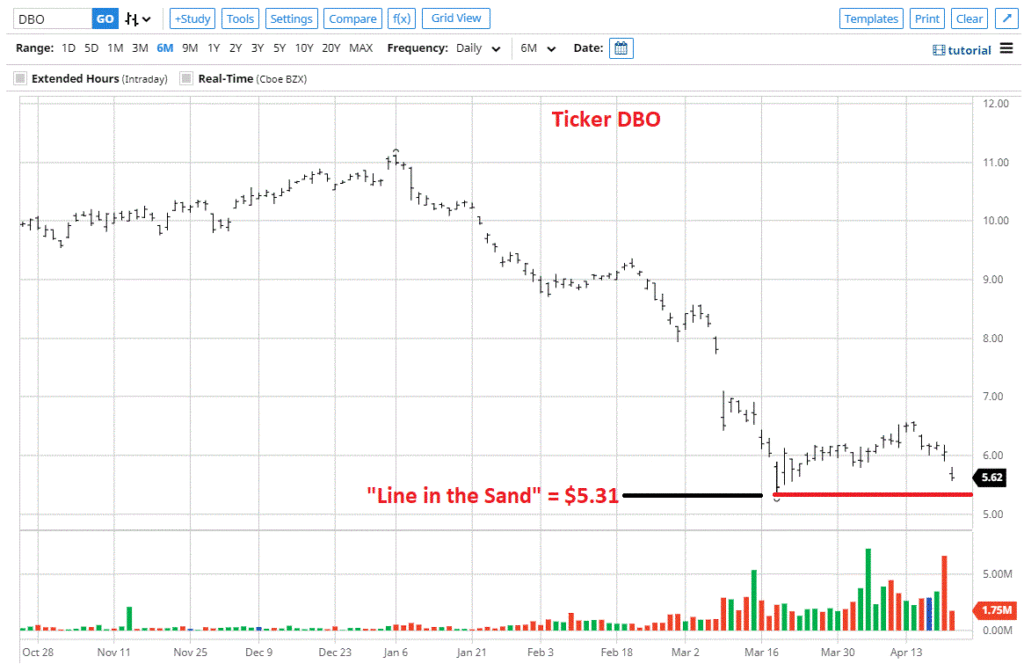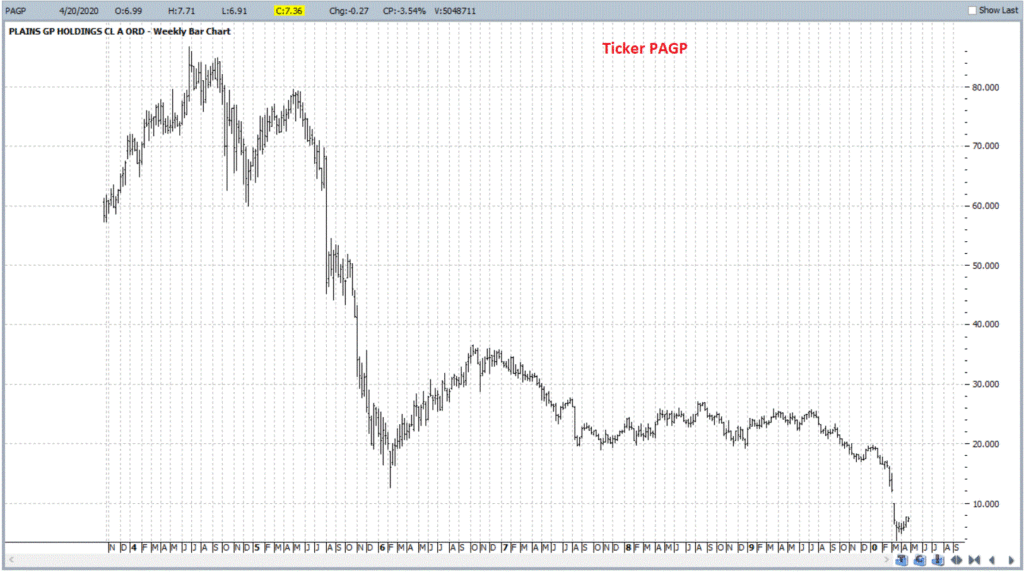Let’s face it, these are difficult times. There are likely a lot of opportunities shaping up. Unfortunately, there are also a lot of associated risks. For the “average investor” (you know who you are) NOT “taking the plunge” into troubled waters is likely the best play.
But for the rest of you (you definitely know who you are), consider these three thoughts:
#1. Do not put your head in the sand
From a mental health standpoint it may be best for you to be on the sidelines – that’s up for each individual to decide. But there ARE opportunities forming and taking place that you might do well to consider
#2. When you bet in a volatile situation, bet small
Fight the urge to “be a hero”. If you want to bet on a trend continuation or a trend reversal in something, go ahead. Just DO NOT risk a lot of money on that position. If you get it right you will probably do pretty well even with a small allocation. If you get it wrong you don’t want to get hurt badly – financially and/or emotionally (where you end up second-guessing yourself for a long time to come).
#3. Be patient
These are absolutely abnormal times, and yes, it is OK to wait for the path to become a little clearer, or at least to “calm down” a bit before acting.
Some Thoughts
Here and here I intimated on several occasions that – to summarize – “we will likely look back on this period as a great buying opportunity in the energy sector.” At the same time, in each piece I also stated that – paraphrasing here – “I am not quite ready to take the plunge yet.” The old adage about the dangers in trying to “catch a falling safe (or knife if you prefer)” were top of mind.
I still hold both of these beliefs. I do think that terrific bargains will emerge/are emerging in the energy sector. I also still think I am not quite ready to dive in. What really swayed my thinking in terms of staying on the energy sidelines is all that I have been reading about the effect that all of this is likely to have on the shale oil business in the U.S. – i.e., a lot of bankruptcies if crude remains below $30 a barrel (let alone below $0 a barrel). In this article I wrote about TAN, XLE, XOP and PAGP. Interestingly, despite all of the turmoil in the crude oil market, all four of these are fairly nicely above their price level on the day the article was published. Two thoughts on energy/crude:
Ticker DBO
DBO is an ETF that does NOT roll from one futures contract month to the next (which can an extremely negative results if farther out months are more expensive than the current month). The fund tracks the DBIQ Opt Yield Crude Oil Index ER which is a rules-based index composed of futures contracts on light sweet crude oil (WTI) that aims to mitigate negative roll yield in its contract selection. The Fund is rebalanced & reconstituted annually in November.
Figure 1 displays a daily chart of DBO – note that (so far) it has not dropped below the 3/18 low of $5.31 a share. Note that I am not making a prediction one way or the other about whether it eventually will or won’t take out that price level. It seems very optimistic to think that it will not.
Still, I find it interesting that in light of the roughly 7,257 articles about “negative crude oil prices”, this one has yet to hit a new low.

Figure 1 – Ticker DBO (down, but not yet “out”) (courtesy: www.BarChart.com)
Make no mistake, I am not jumping in here to buy DBO – patience, remember? – but I am keeping a pretty close eye on things. While I have no illusions that $5.31 on DBO is some “magical” number, wherever and whenever this thing bottoms out, it may offer up a significant low-priced opportunity. There are two key questions:
*How long will the oil glut last?
*Do you think it will last forever?
No one knows the answer to the first question, but I personally have a hunch regarding the second. At the same time, I have been patient and avoided diving into the energy sector so far, so what’s a little longer?
Ticker PAGP
PAGP (Plains Group Holdings) essentially is in the business of “moving energy” – pipelines, trucks, ships, etc. A pretty lousy place to be at this exact moment in time. Figure 2 displays the an extremely dismal picture of a stock that fell from $97.74 in 2014 to a recent low of $3.04 a share.

Figure 2 – Ticker PAGP (Courtesy ProfitSource by HUBB)
Again, I can’t state categorically that there is an opportunity here. And even if one did, this is a great example of something crying out for a very small bet, given the high degree of uncertainty, risk and the fact that the stock has cratered.
But again, there is a key question to consider:
*Will energy continue to need to be moved in the future?
Even if the answer is “Yes” it does NOT mean that the price of PAGP stock is destined to move sharply higher. It does however suggest that it is not headed to $0.
So here again, I am trying my best to keep my head out of the shale, er, sand.
Patience, people, patience.
Jay Kaeppel
Disclaimer: The information, opinions and ideas expressed herein are for informational and educational purposes only and are based on research conducted and presented solely by the author. The information presented represents the views of the author only and does not constitute a complete description of any investment service. In addition, nothing presented herein should be construed as investment advice, as an advertisement or offering of investment advisory services, or as an offer to sell or a solicitation to buy any security. The data presented herein were obtained from various third-party sources. While the data is believed to be reliable, no representation is made as to, and no responsibility, warranty or liability is accepted for the accuracy or completeness of such information. International investments are subject to additional risks such as currency fluctuations, political instability and the potential for illiquid markets. Past performance is no guarantee of future results. There is risk of loss in all trading. Back tested performance does not represent actual performance and should not be interpreted as an indication of such performance. Also, back tested performance results have certain inherent limitations and differs from actual performance because it is achieved with the benefit of hindsight.

